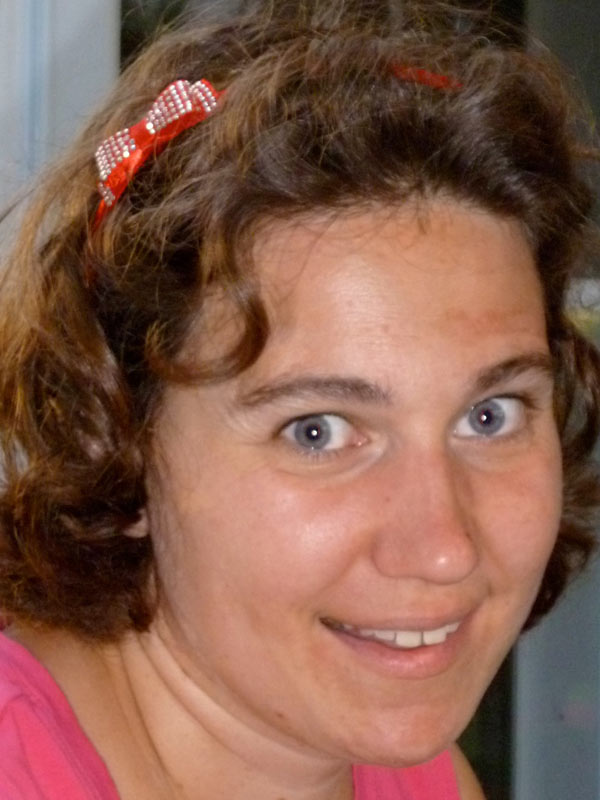 Our daughter has received Social Security Disability and Medicaid ever since she turned eighteen. The amount Lindsey receives has gone up over time, yet for a very long while, it was around $600 per month—not enough to live an independent life. And yet, that was her greatest wish (as well as ours, too)—she wanted to live in an apartment in downtown Silverton. Since she doesn’t drive, she wanted to be able to walk everywhere: to work, to Roth’s grocery store, and to her doctor and dentist appointments.
Our daughter has received Social Security Disability and Medicaid ever since she turned eighteen. The amount Lindsey receives has gone up over time, yet for a very long while, it was around $600 per month—not enough to live an independent life. And yet, that was her greatest wish (as well as ours, too)—she wanted to live in an apartment in downtown Silverton. Since she doesn’t drive, she wanted to be able to walk everywhere: to work, to Roth’s grocery store, and to her doctor and dentist appointments.
Lindsey works at a State Farm Insurance agent’s office in our small town. She files papers in a back room in their office.
“I work fulltime, two hours a day,” Lindsey tells anyone who asks. “I love my job. It is the best job in the world.”
But even with a part-time job and Social Security Disability benefits, Lindsey could barely pay rent and utilities. We applied for subsidized housing and she qualified. She also receives $16 on her Oregon Trail card (food stamps) each month.
When you make so little, it is hard to save, but Lindsey’s needs are simple. She requires food, shelter, and medical attention (when needed). She lives on a budget and spends her allowance on Snicker’s Mocha Coffees and Dora The Explorer Coloring books.
Still, each month, Lindsey could save a little. Yet, for the disabled, the problem with building up savings is a conundrum. Because they receive government benefits, they are limited to no more than $2000 in total assets. If Lindsey saves too little, she may not have adequate funds if she experiences an emergency. If she saves too much, until she spends down her savings, she will lose her benefits.
This is also a problem for parents who want to save for their child. Any funds saved in a child’s name are considered assets and counted against the $2000 limit. The concern many parents have with this issue is not so much while we are alive. It is once we are no longer around to help our child complete the mounds of paperwork to apply for services and/or funding. And then other concerns pop up in the back of our minds: What if our child gets out of the program and cannot get back on because the government changes the rules? How will she live? What would happen to her then?
Well, as of the end of 2016, there is some good news for Oregonians. There is a new plan that helps disabled individuals save without penalty. It is called the Oregon ABLE (Achieving A Better Life Experience) Savings Plan.
Eligibility for the ABLE Savings program is based upon the Social Security Administration’s definition of disability: people with Down syndrome, autism, cerebral palsy, and other intellectual or developmental disabilities.
ABLE accounts allow people to set aside money for long-term savings. Anyone can contribute to an account up to the annual gift tax exclusion, currently $14,000. If your child is younger than twenty-one, Oregon residents are eligible for a tax deduction for their annual contribution. In 2016—this amount was up to $4,620 for a joint tax return and $2,310 for single filers.
accounts allow people to set aside money for long-term savings. Anyone can contribute to an account up to the annual gift tax exclusion, currently $14,000. If your child is younger than twenty-one, Oregon residents are eligible for a tax deduction for their annual contribution. In 2016—this amount was up to $4,620 for a joint tax return and $2,310 for single filers.
If your child is older than twenty-one, the tax deduction no longer applies. Still, the ABLE account may be a great way for parents, grandparents, and the disabled individual to save for the future. The maximum ABLE account balance currently allowed is $310,000; however, once the account exceeds $100,000, it will begin to count against the $2,000 asset limit for SSI.
The ABLE program offers several investment options—depending on whether you need the money sooner or if you wish to plan for future expenditures. All earnings are tax-free if used for qualified expenses such as education, housing, assistive technology, personal support services and other disability-related expenses.
“Many have needed this for a long time, but it wasn’t in place,” said David Bell, outreach director for Oregon ABLE Savings Plan. “This is an important tool of empowerment.
Bell said that there are many expenses for someone living with disabilities that normal insurance doesn’t cover. The $2000 maximum assets aren’t just related to cash. For instance, if someone had to purchase an electric wheelchair—which is considered an asset—they would be left with significantly less allowable savings for other necessities.
Although the ABLE program is a savings program that is available to all states, not all have chosen to participate—possibly due to resources, possibly for other reasons. However, Oregon decided to be a leader. They wanted to set the bar in helping the disabled community. And since people who qualify are able to take part in ABLE investments outside their state of residence, it takes the pressure off those states that choose not to create programs at this point in time.
Natalie Pate, Statesman Journal reporter, wrote, “Individuals with disabilities will no longer have to live in poverty or limit their savings to receive state and federal benefits.”
For years, this has been a dance that Lindsey and I (as her representative payee—the person who is designated to oversee her finances) have struggled with. Keeping enough cash on hand in case she needs it for something. Spending down when she gets too much accumulated.
“The freedom to set financial goals and save your own money is so basic,” said Senator Sara Gelser (D-Corvallis), a sponsor of the legislation that created ABLE. “Unfortunately, for too long people with disabilities have been denied that basic opportunity.”
My husband and I are sighing with relief. ABLE is exactly the kind of program we’ve wished for. Now we can save for Lindsey’s future without financially harming her.*
*There may be other, better ways to save for your child than an Oregon ABLE account. Please read the fine print and discuss all options with a legal professional before deciding if this program is best for your particular situation.
Cover photo credit: 401kcalculator.org

My first book was released September 2017 by She Writes Press. If you are interested in learning more about Loving Lindsey: Raising a Daughter with Special Needs, please click here.

